Unknown photos of Hitler's bunker taken in April 1945
By Pictolic https://pictolic.com/article/unknown-photos-of-hitlers-bunker-taken-in-april-1945.htmlOn April 30, 1945, when Germany's defeat in the war became an obvious fact, Adolf Hitler shot himself and his wife Eva Braun in his Fuhrerbunker in Berlin. Although many historians dispute this fact, considering the death of Hitler a hoax.
After the end of the bloody fighting in Berlin, LIFE photographer William Vandivert arrived in the dilapidated city and captured its streets, as well as Hitler's secret bunker, in which the Fuhrer committed suicide
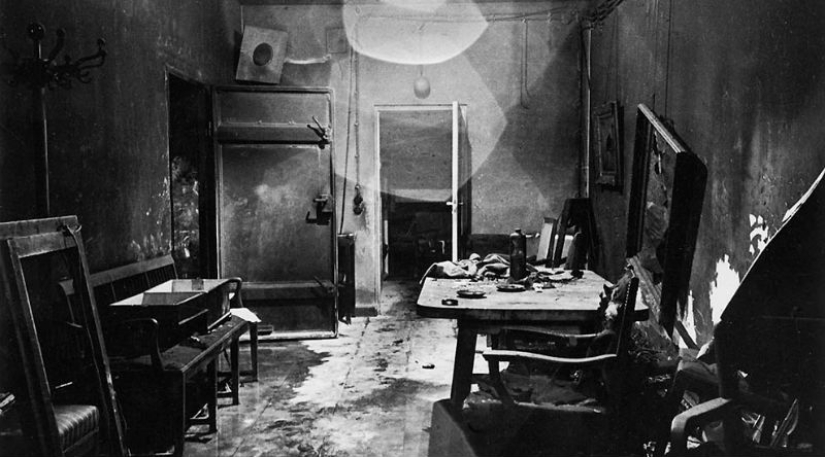
In April 1945, the Red Army fought fierce battles in the streets of Berlin, conquering the Reich capital meter by meter. It was obvious who would win the war in Europe.
Hundreds of thousands were killed in the battles for the capital, including unrecorded civilian casualties. Countless people were left without a roof over their heads. But the end of the Third Reich came on April 30, 1945, with the deaths of two people: Adolf Hitler and Eva Braun.
Shortly after the end of the two-week siege, 33-year-old LIFE photographer William Vandivert arrived in Berlin. In this collection — his previously unpublished photos from Hitler's bunker and the destroyed Berlin.
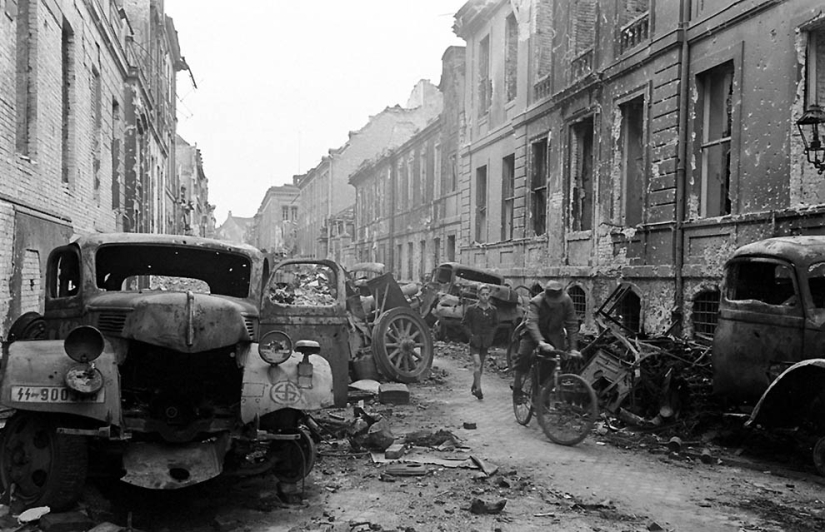
Oberwalstrasse, central Berlin. Here, in the spring of 1945, the most brutal battles were fought. (William Vandivert/TIME & LIFE Pictures)
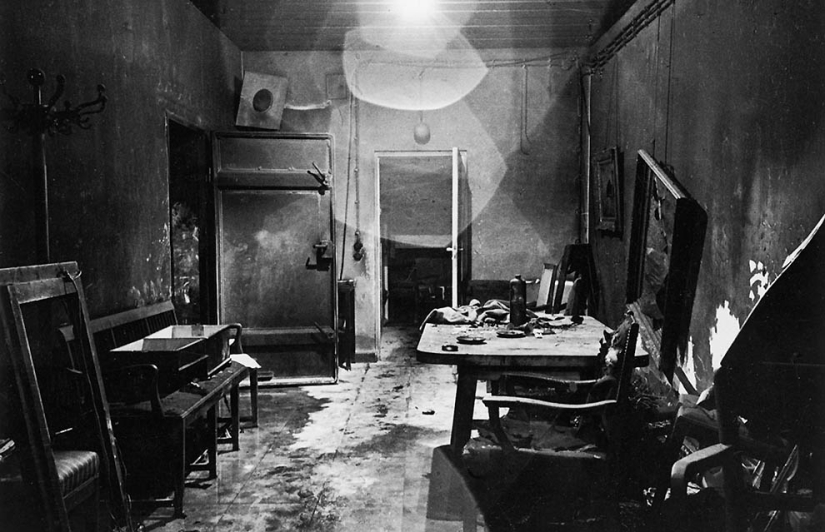
Vandivert was the first Western photographer to gain access to Hitler's Fuhrerbunker. Some of the photos he took were published by LIFE in July 1945, but most of the photos from this collection were never published. In the photo: one of the rooms in the command bunker, burned by the retreating Germans and cleared of the surviving valuables by the advancing Red Army. (William Vandivert/TIME & LIFE Pictures)
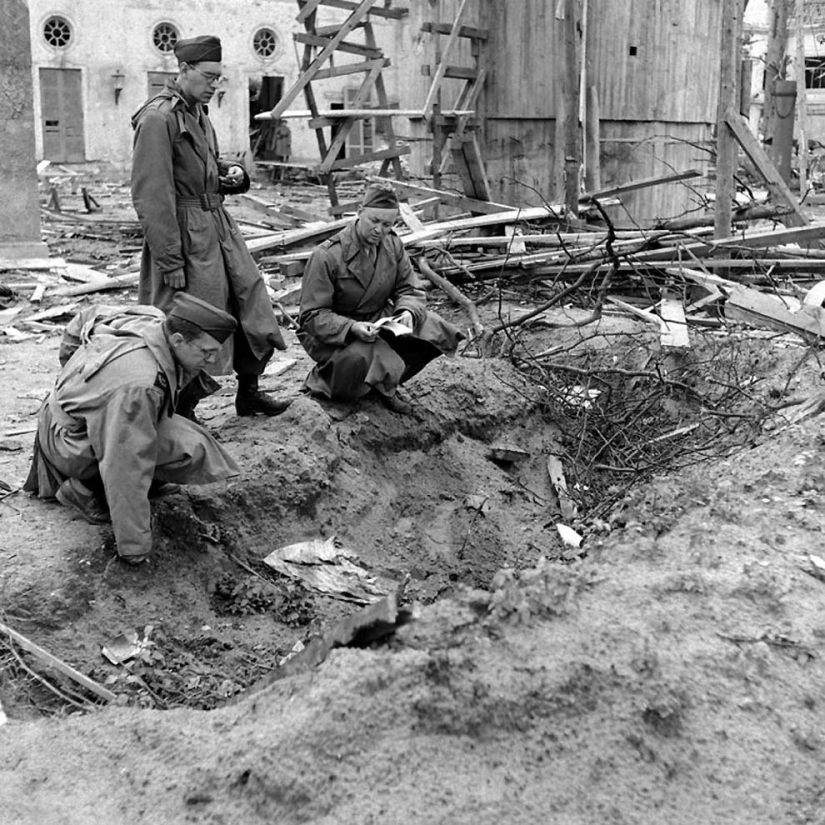
A 16th-century painting taken by the Germans from a museum in Milan. Vandyvert wrote about this to the editor: "I had to take photos in the dark, using one candle for lighting – there was no light in the rooms. Our group was ahead of all the others, who came only forty minutes later." (William Vandivert/TIME & LIFE Pictures)
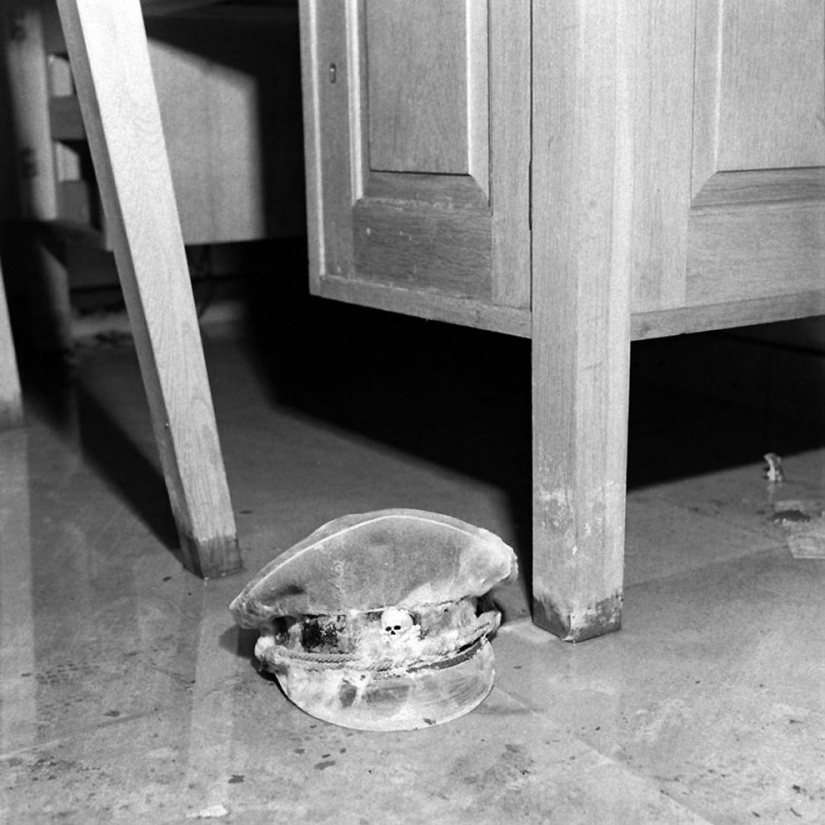
The first of 20 pages of Vandyvert's notes made for the New York editorial office. The photographer described not only the footage captured on each film, but also the mood and atmosphere in Hitler's bunker and the Reich Chancellery ("view of the Chancellery... it is bombed, burned and shot to hell"). (William Vandivert/TIME & LIFE Pictures)
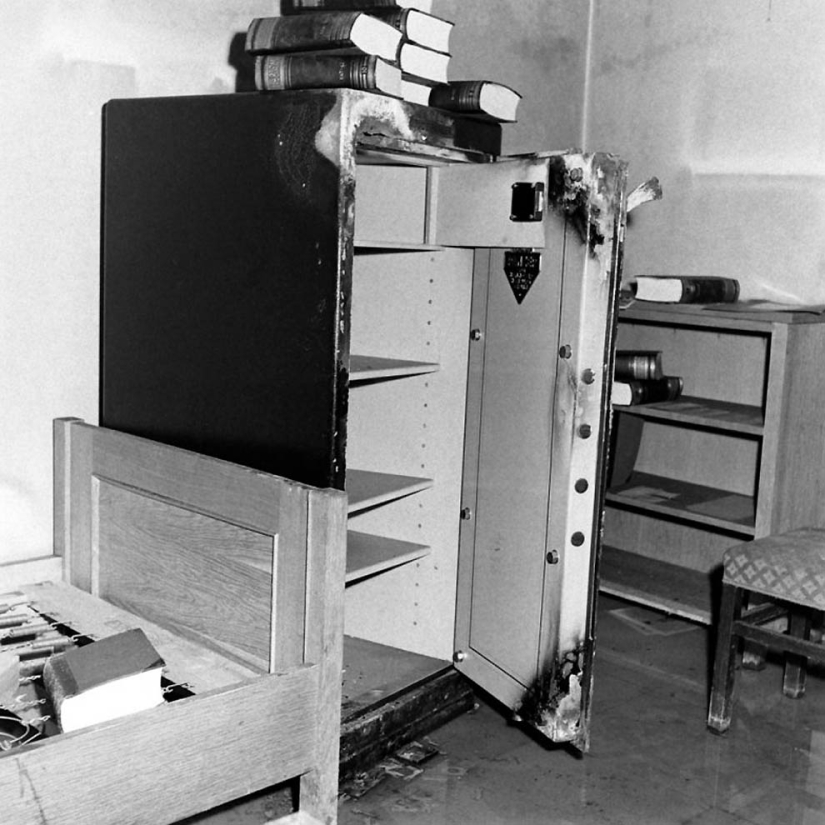
Lighting the dark corridors with candles, the correspondents examine the sofa covered with blood stains. Vandivert writes: "Photos of correspondents looking at the sofa where Hitler and Eva Braun shot themselves. Eva sat at the far end, and Hitler sat in the middle. Then Hitler fell to the floor." This turned out to be only half true. Historians believe that Eva Brown killed herself with cyanide, not a gun, so the blood on the couch was not Eva's blood. (William Vandivert/TIME & LIFE Pictures)
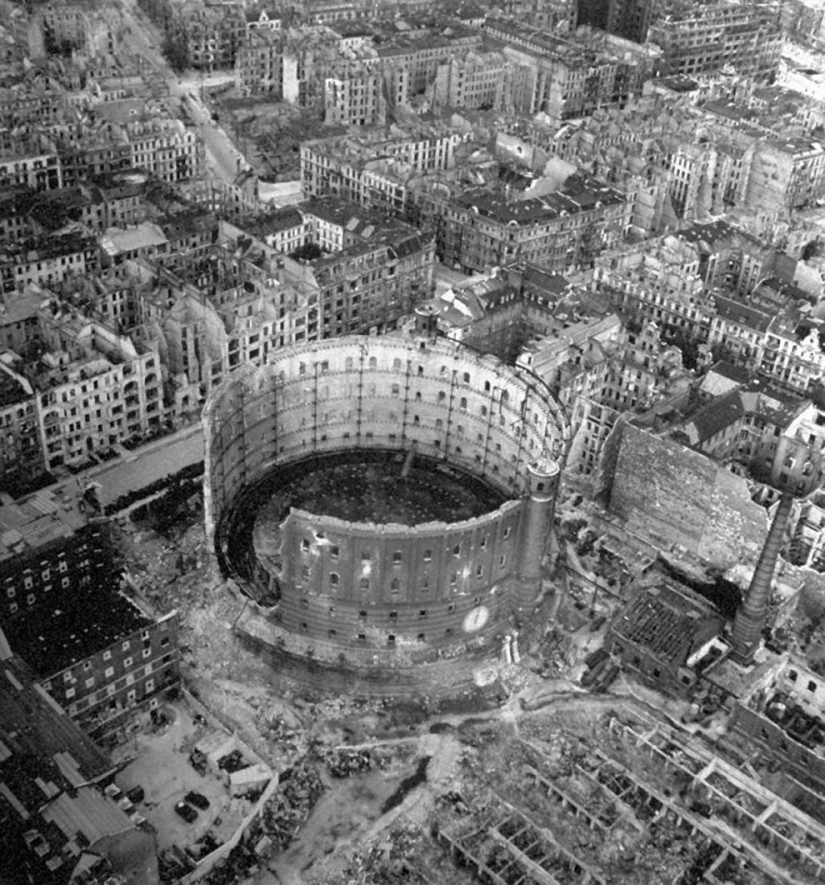
Reporter Percy Knaut examines the dirt and debris at the bottom of the trench in the garden of the Reich Chancellery, where the bodies of Hitler and Eva Braun are believed to have been burned after suicide. Vandivert's notes: "A broken-down bird feeder on a tree... these were hung everywhere in Berchtesgaden (Hitler's estate in the Bavarian Alps). They must have meant a lot to him." (William Vandivert/TIME & LIFE Pictures)
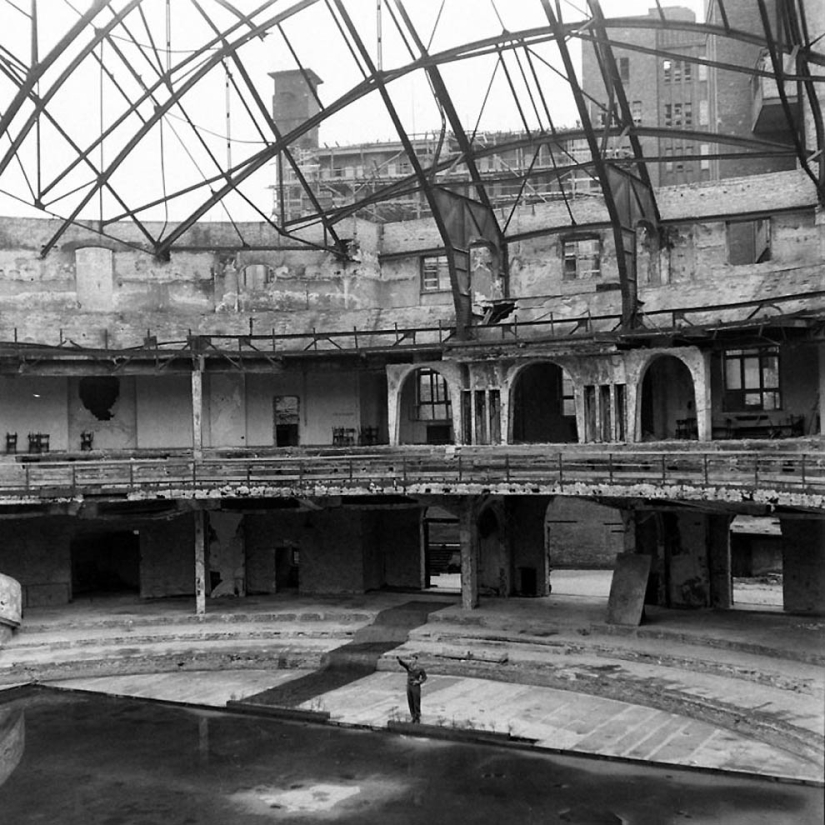
The famous "death's head" - the SS emblem-is barely visible under a layer of mold. The cap is lying on the floor of the bunker, flooded with water. (William Vandivert/TIME & LIFE Pictures)

The phrase "violence and looting" sounds medieval, but perfectly describes the actions of the Soviet troops in the conquered Berlin. It is foolish to deny this, because no army in the history of wars has been completely sinless in this sense. It is not surprising that the Soviet troops cleared the bunker of what the Germans did not take with them and did not burn during the retreat. (William Vandivert/TIME & LIFE Pictures)
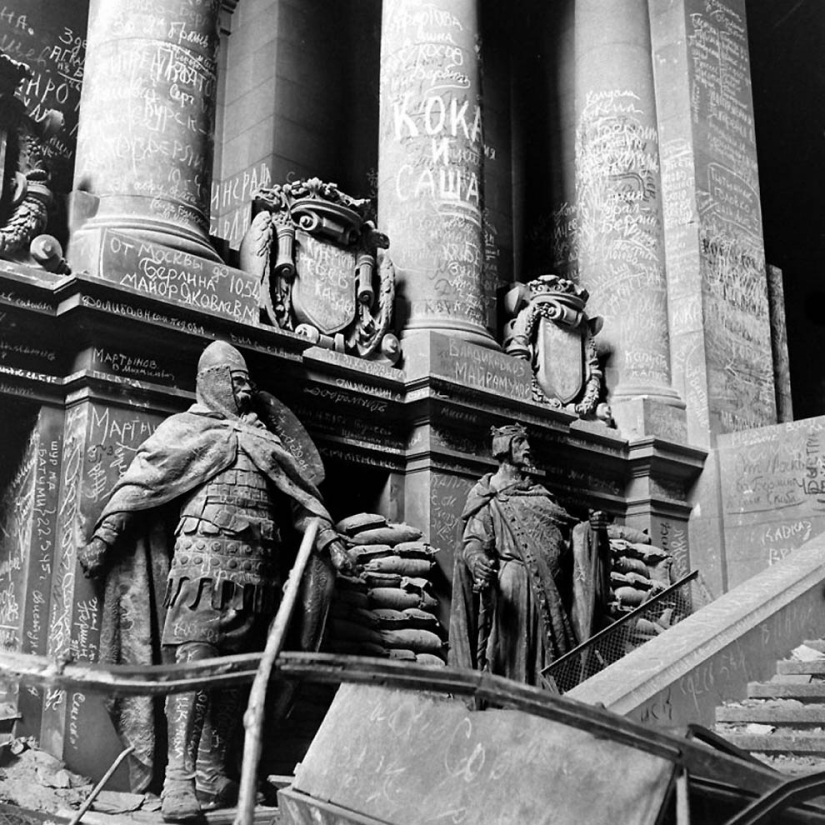
Vandivert writes: "Almost all of Berlin's famous buildings are in ruins. In the center of the city, soldiers could walk for several blocks and not meet a single living soul, feeling only the smell of death." Pictured: a view of the bombed-out Schöneberg district in Berlin. From August 1940 to March 1945, American, British and Soviet bombers made a total of more than 350 air raids on the city. Tens of thousands of civilians were killed. (William Vandivert/TIME & LIFE Pictures)
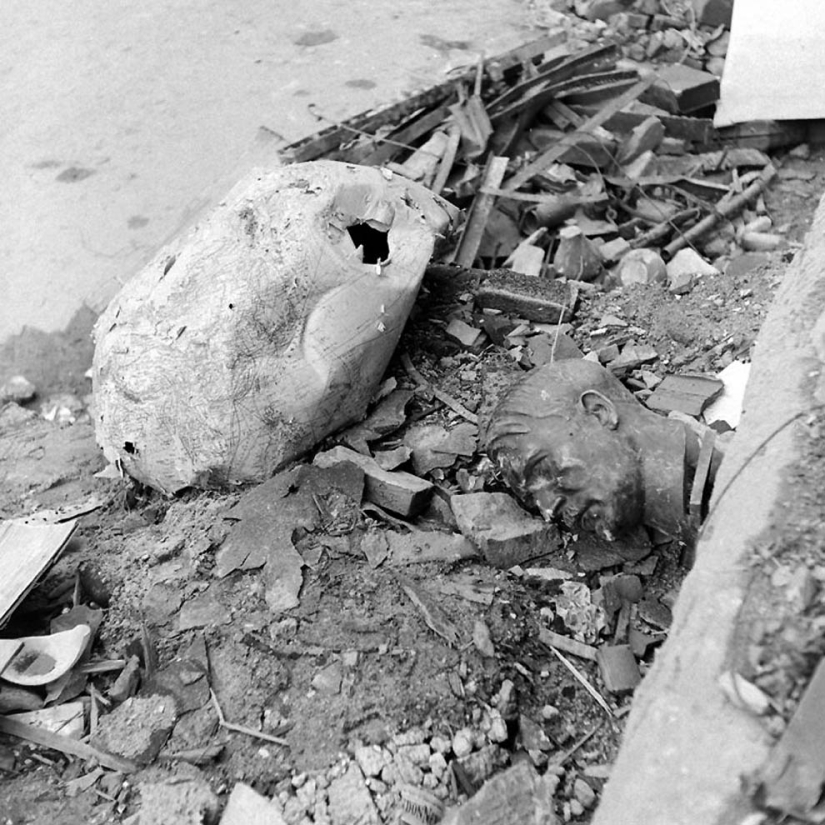
The Allied forces (British, American, French, and Soviet) gained control of Berlin, but this does not mean that they rested on their laurels. Hard work was carried out to restore order in the destroyed city. On the shoulders of the soldiers who wanted to return home, the troubles of an entire nation fell. Pictured: Private First Class Douglas Page at the Berlin Sports Palace stands at the spot where Hitler used to give his speeches. The building was destroyed during a bombing raid on January 30, 1944. (William Vandivert/TIME & LIFE Pictures)
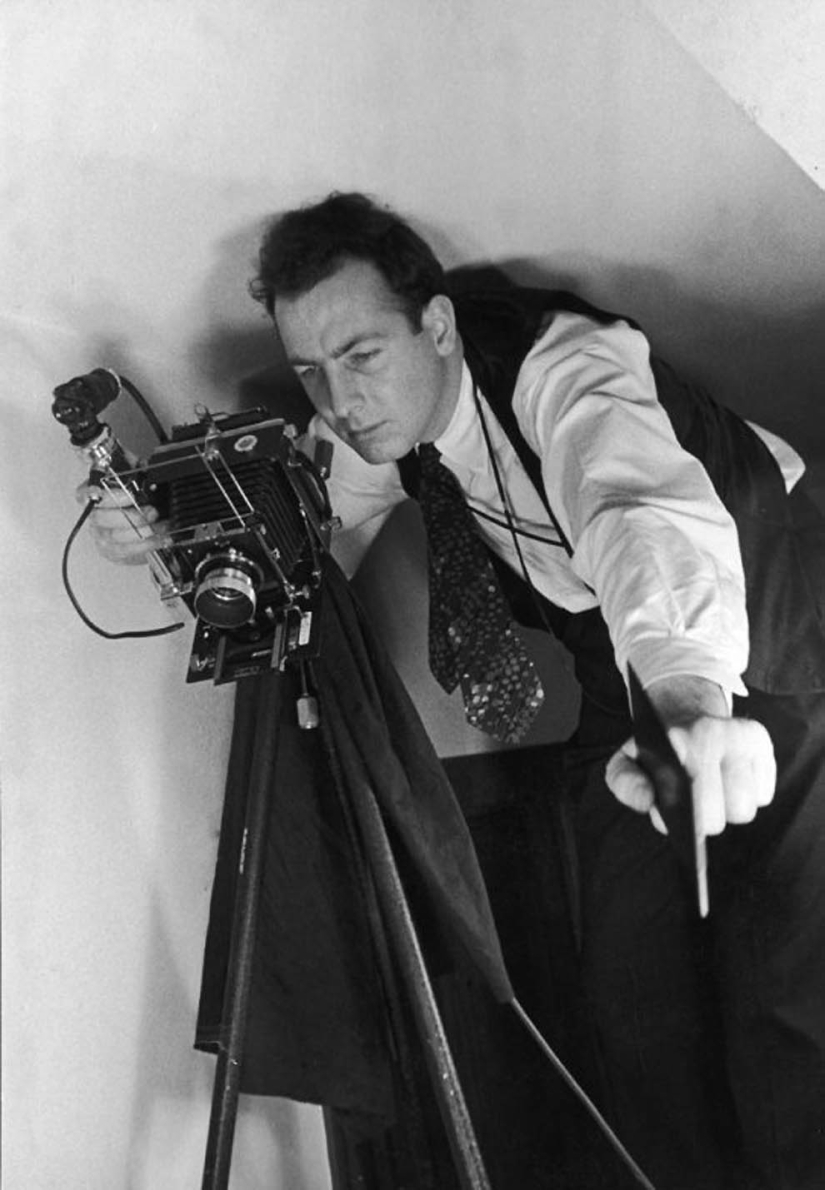
Soviet soldiers and an unknown civilian move a huge eagle that used to hang over the entrance to the Reich Chancellery. Vandivert: "It was loaded onto a car to be taken away as a trophy." (William Vandivert/TIME & LIFE Pictures)
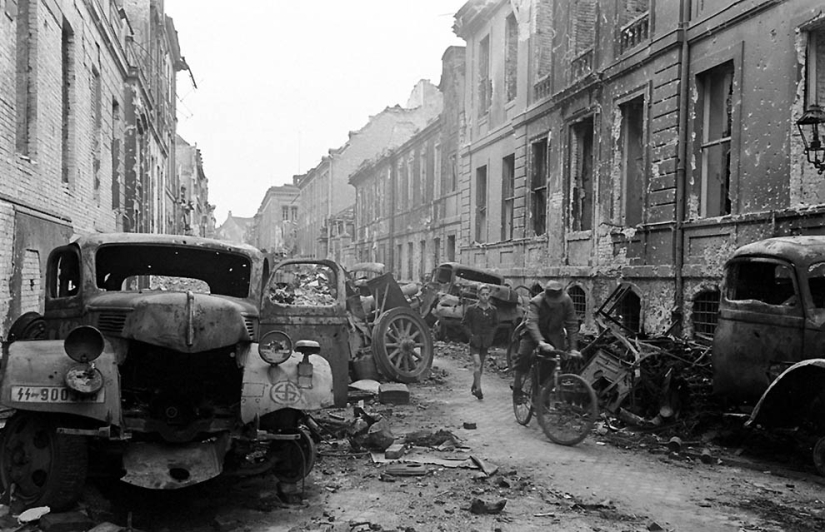
The columns at the entrance to the Reich Chancellery and the entire lower part of the building are inscribed with the names of the dead and survivors, who, like all soldiers at all times, wanted to shame the enemy, honor fallen comrades or simply testify: "I was here. I survived." (William Vandivert/TIME & LIFE Pictures)
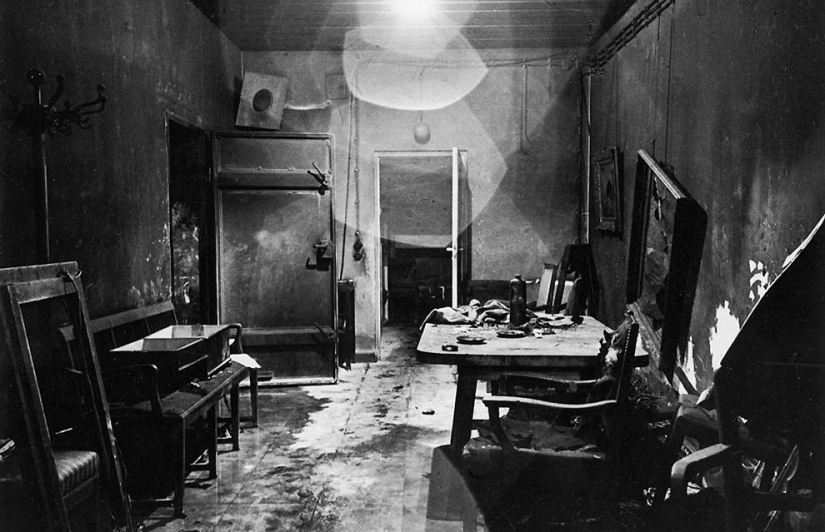
A broken globe and a bust of Hitler among the rubble in front of the Reich Chancellery. This picture perfectly illustrates the state of Berlin in April 1945 on the eve of the Potsdam Conference. Just at this time, the song Berlin Kommt Wieder ("Berlin will return") became more and more popular in the city. And it was considered "dangerous" not so much because of the lyrics as because of the way Berliners sang it. (William Vandivert/TIME & LIFE Pictures)
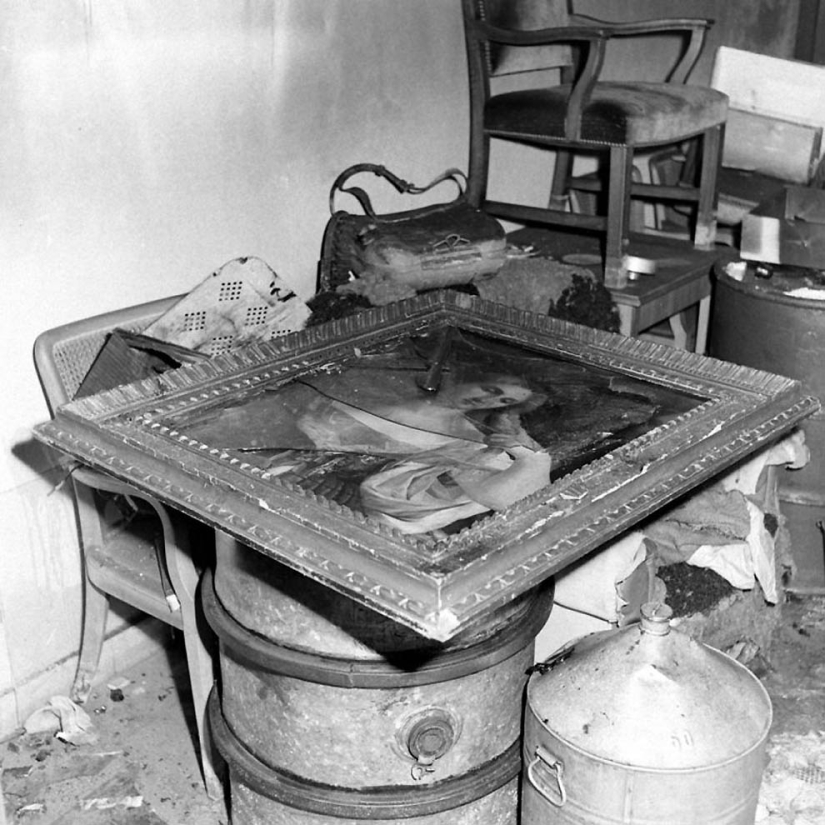
William Vandyvert shot for LIFE from the late 1930s until 1948. In 1947, together with Robert Capa, Henri Cartier-Bresson and David Seymour, he created the Magnum Photos agency (where he worked for only a year). Vandivert died in 1992.
Keywords: Berlin | War | Europe | History | Nazis | Photographer | WWII | Hitler | Bunker | Life | 40s
Post News ArticleRecent articles

It is known that the "bald from Brazzers" has many professions to which he gives himself selflessly and without a trace. The porn ...

I wonder how such bizarre and funny images are born in the head of animators? Judging by these photos, which depict ordinary ...
Related articles

We believe that the famous saying "Bad dancer interfere with eggs" not quite decent. Someone even sure this is paraphrased folk ...

Agnieszka Lorek prefers the mysterious thickets of Welsh forests to ordinary photo studios. She creates images of beautiful models ...

Modern art takes on very unexpected forms. French artist Thierry Mandon hangs in time and space on the walls of abandoned buildings ...

When we imagine a classic drunkard at home, his image is inseparable from a stale underwear tank top with straps. This wardrobe ...